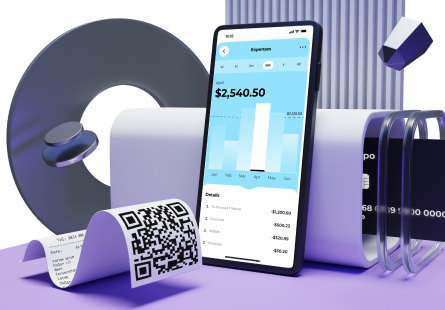It goes without saying that the ultimate goal of any business project is to make customers happy, and software product development is no exception. To achieve this, the product manager should carefully study the customer’s wants and needs and pass this information on to the development team. Here’s where user stories come into play.
An agile user story explained
Agile software development is anchored in the people-first approach, a user story being an effective tool that allows the team to focus on the end-user in the software development process.
So what is a user story? Simply put, user stories are informal descriptions of a software feature written from the customer or end-user viewpoint. A user story describes the desired functionality in a couple of sentences written in simple language, without going deep into detail — its primary goal is to briefly explain how the product will deliver value to a customer.
Basically, user stories cover the type of user, which features the user wants, and why. This information helps to come up with a general, simplified description of a requirement.
User stories are typically recorded either on paper, for example, written on index cards or post-it notes, or in agile project management software.
In agile software development, the product owner is typically in charge of writing user stories and integrating them into the product backlog. However, since user stories are written in simple language, anyone on either the business or the technical side can write user stories, including the client, managers, users, or development team members.
Why use user stories
Requirements tend to constantly change as the development team and the customer find out more about the system as the project comes along. Let’s face the truth: it’s virtually impossible to deliver a functional product that fully meets the customer’s expectations relying solely on the initial static requirements. User stories help effectively tackle this issue. In addition, they go a long way towards delivering software more quickly.
Here are some most impressive benefits agile user stories provide:
- They allow you to keep focused on users and their problems.
- User stories help eliminate the communication gap and ensure that all the stakeholders are on the same page. Without writing user stories, you may end up with plenty of rework and time-consuming iterations.
- Agile user stories facilitate creative solutions. When the development teams work toward solving a problem rather than developing product features, they have more space for creativity.
- Good user stories help prioritize features and remove unnecessary feature requests.
- They are a valuable source of motivation for development teams since they provide a feeling of progress.
Features of a good user story
Before discussing the user story format and key components, let’s clarify what a good story is. In agile development, there’s a commonly accepted set of criteria to help evaluate the quality of a user story. These criteria are quite easy to remember thanks to the acronym INVEST.
Independent
The user story should be independent of any other user stories.
Negotiable
You should write user stories in a way that allows for discussions and negotiations.
Valuable
Each agile user story has to deliver value to customers and end-users.
Estimable
Good stories should be easy to estimate so the team can prioritize them and fit them into sprints.
Small
An agile user story should refer to a small chunk of work that can be completed in a few days.
Testable
A good story can be tested with the help of acceptance criteria, written before the story has been implemented.
How to write a good story
User stories make up an essential part of the development process since they help bring customers into focus and provide a range of benefits to the entire team, making it crucial to approach writing user stories with proper care. Following these simple steps will help you come up with well-written user stories that will deliver value to your customers and benefit your team.
Keep your user story short
The most common approach to writing user stories involves answering three questions:
1. Who will use the product?
2. What does a user expect from it?
3. Why is it important?
These answers are usually packed into a single sentence written in the active voice. The most prevalent user story template is structured in the following way:
“As a [specific user], I [want to] [so that].”
Here are a couple of user story examples to get you inspired:
As a remote team leader, I want to track my team’s progress so that I can analyze if they will likely meet deadlines.
As Kate, I want to invite other people so that they can easily download the app.
As Mrs. Jenkins, I want to get a notification when my parcel arrives so that I can pick it up immediately.
Focus on your user personas
Keep in mind that agile user stories should be written from the real user’s standpoint. If you have different individual users in mind, you can create separate stories for each user persona — this way, you’ll be able to focus on helping each single user category reach a specific goal.
If you don’t know who your users are, there is no use in writing user stories. For starters, conduct user research, for example, by watching and interviewing users. Listen to research-based user feedback — capture the problem or need in their words. If you use only suggestions, you’ll risk writing speculative stories that can lead to the poor value of the digital product.
Work on the story together
Creating a good agile user story requires collaboration in the first place. The product owner and the team can greatly benefit from discussing the stories or even writing them together. Collaborative user-story mapping means combining the creativity and knowledge of all agile team members, which translates into better user stories.
Create stories that can be completed within one sprint
User stories that call for a longer time than one sprint (around two weeks) should be broken into smaller stories. After each sprint, the team will get a sense of completion. In addition, you’ll get an opportunity to roll out new functionality to the market more often.
Organize user stories with a story map
User stories facilitate building a better agile product backlog, which is user-centric and explains software project requirements in a practical way. However, when viewed separately, user stories don’t reveal the whole picture that would show larger user journeys from opening the app until reaching the final user goals.
User story mapping enables arranging user stories into a manageable model that translates into a more efficient product plan. At its core, user story mapping is a top-down methodology for collecting requirements. Most typically, a user story map will consist of three levels:
- user activities
- user tasks
- user stories
Start with epics
Epics refer to big, more general user stories that allow you to roughly outline the product functionality without going deep into detail. This is especially beneficial if you plan to develop a new product or a new software feature. Having sketched the rough scope, you win time to find out more about the users and how to address their needs most effectively.
Capture stories on cards
At the advent of the user story practice, the agile product-development teams used paper cards to capture stories. Even with various digital tools at their disposal, savvy teams still use paper cards. Apart from being the cheapest and most available tools for user story, paper cards offer a couple of substantial benefits. Firstly, it’s easy for a product manager to collaborate with the team since everyone can write down their idea on a card. Next, you can quickly and easily group cards, bringing your planning game to the next level.
Leverage acceptance criteria
As you split the epics into smaller user stories, you need to define acceptance criteria — a set of requirements that must be satisfied to mark a story complete. Acceptance criteria make the story testable. Three to five acceptance criteria typically suffice for detailed user stories.
User stories vs. system requirements: what’s the difference?
The terms user stories and system requirements are commonly used in the software industry. Basically, they both serve as a roadmap in software development, however, these terms mean different things and shouldn’t be confused.
As mentioned above, agile user stories are concise, simple descriptions of functionality written from the user’s viewpoint. They focus on why and how users will interact with the product. A user story is often accompanied by acceptance criteria that play the role of the functional requirements that support a user story.
On the other hand, a product requirements document is more about the waterfall methodology, where requirements are specified at the initial phase of the project, providing a detailed description of the desired functionality.
The agile approach suggests more flexible processes, and requirements are constantly added to the backlog through user stories.
User story vs. use case
Although both user stories and use cases are of great help for teams in planning their work, they are totally different concepts. While user stories are simple, concise descriptions from the customer’s viewpoint, use cases embrace more context.
A use case accounts for how a user will achieve a goal. From the technical standpoint, it is a more detailed description of how a user interacts with a system, which gives developers an idea of what they need to include in the system. Creating use cases is a more in-depth process than writing user stories.
Final words
Without any doubt, user stories should never be underestimated. They prevent teams from getting lost in technical details and help deliver rewarding user experiences by focusing on users’ needs. Knowing the features of a good story and having our user story template and tips at hand will help you craft user stories that create value both for your team and your end-user.







